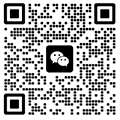

Simple Directional Complements: 来 vs. 去
他跑来了。 (He ran over here.)
我给他寄去一个包裹。 (I sent a package to him.)
来: Action moves towards the speaker.
去: Action moves away from the speaker.
Structure: [Verb] + 来/去
Examples:
Compound Directional Complements: 上来/下去, 进来/出去, 回来/回去, etc.
请坐下来。 (Please sit down.)
他从房间里走出来。 (He walked out from the room.)
飞机飞上去了。 (The plane flew up and away.)
These are combinations of simple directional complements, expressing both "path/direction" and "coming/going."
Structure: [Verb] + [上/下/进/出/回/过/起] + 来/去
Examples:
Extended Usage:
天气热起来了。 (It's starting to get hot.) -> Indicates the beginning
请说下去。 (Please continue speaking.) -> Indicates continuation
Directional complements can also indicate abstract meanings like the "beginning," "continuation," or "result" of an action.
Examples:
Summary: When learning directional complements, think about both the physical path/direction of the action and the position relative to the speaker.
Add:NO.151 Xidazhi Street,Nangang Strict,Harbin,Heilongjiang P.R. China,150001
BINCIA CHINESE COLLEGE

